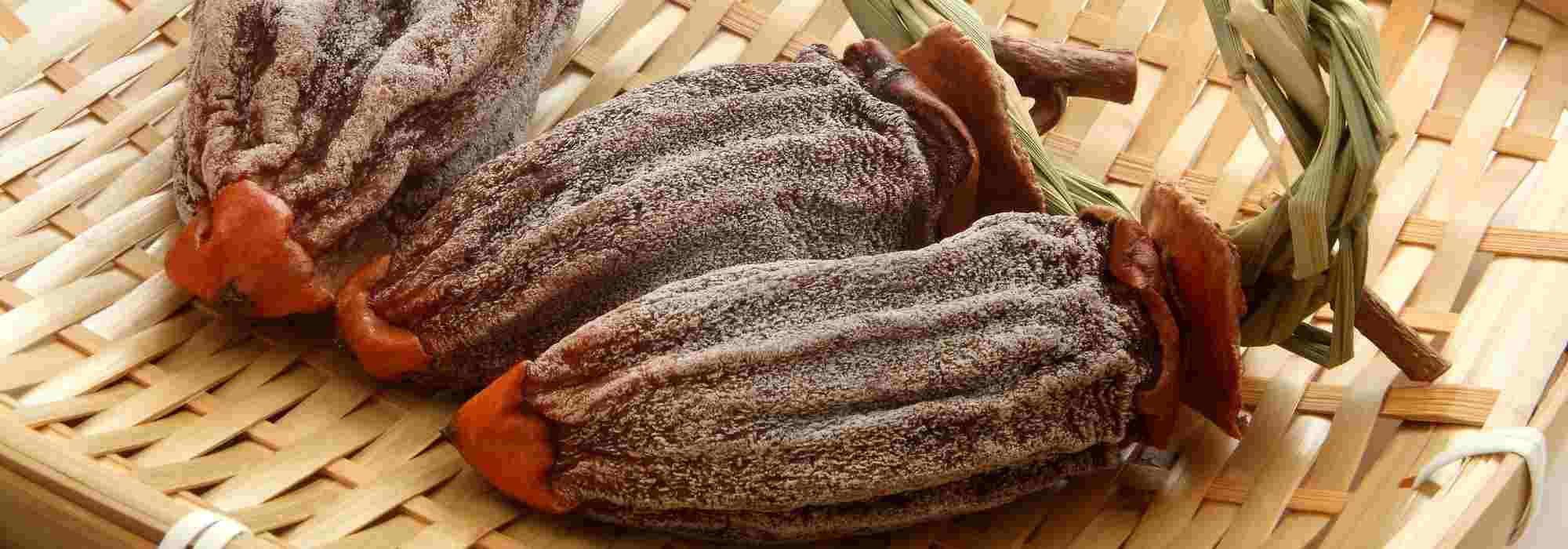
Hoshigaki or dried persimmon
A real treat
Contents
Chinese persimmon, or Diospyros kaki, is a very handsome tree used in Europe mainly for its ornamental qualities : its spreading habit, its autumn colouring turning orange then purple, and its magnificent round, reddish-orange fruits that remain for a long time on the naked tree, like Christmas baubles before their time. This spectacle is in itself one of the great attractions of the persimmon.
Tree produces fruits in such abundance that one often does not know what to do with this rather unwieldy harvest. Fruits seldom eaten here are very popular in China, Japan and Korea, where, once dried, they become a prized treat, the “hoshi-gaki” or dried persimmon.
Discover how to preserve and turn your persimmons into delicious dried fruit for winter!
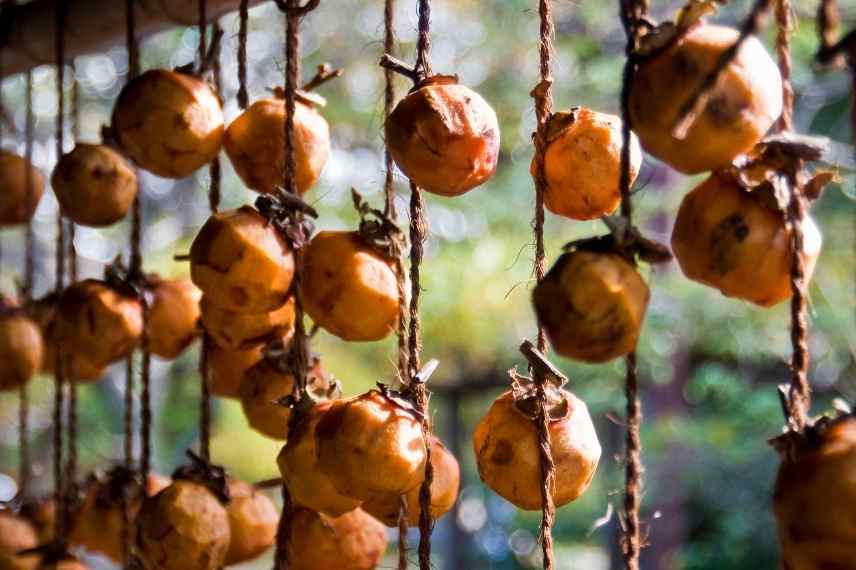
Persimmons drying on strings: a colourful spectacle
A thousand-year-old fruit
In Japan, the kaki or persimmon tree, an ancient tree, is very popular: all parts of this tree are used: leaves for making fritters or infusions, juice as a dye for fabrics or as a waterproofing for lanterns, wood for making furniture, but it is above all the fresh—or rather dried—fruits that I will talk about here, and more particularly their use in hoshigaki.
In land of the rising sun, but also in China and Korea where they are much appreciated, notably as New Year gifts, they are hung to dry outside houses, where curtains of reddening fruit make a magical sight for travellers. It is an ancestral habit: persimmons are peeled then hung in the open air to dry. Much like preparation of Christmas pudding in England, hoshigaki require a traditional preparation, well in advance of when they will be eaten, as drying takes several weeks.
The persimmon fruit, often considered mildly sweet here, has a fragrant flavour and a melting flesh, resembling apricot and date. In the West it is often eaten raw, when ripe—actually when over-ripe—which attenuates its astringent and somewhat bitter character. They are often dressed with plenty of sugar and rum to improve flavour, in spiced compotes. It also lends itself to savoury recipes in exotic salads. Persimmons are rich in sugars, vitamins A, C, B1, B2 and B3 and in carotin.
Dried persimmon is usually eaten accompanied by green tea, or on its own as a soft, indulgent treat.
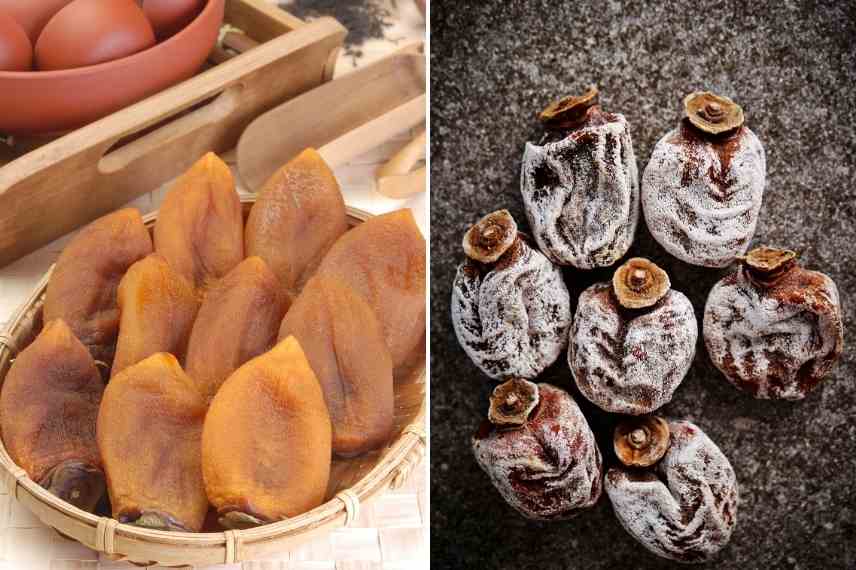
Persimmons are transformed into succulent dried treats
When should you start drying?
Persimmon harvest takes place from late October to mid-November, once fruits have experienced the first frosts. For fresh eating, fruits must become over-ripe (like medlars) otherwise fruit remains too astringent. They keep well for about a month in a cool place for this use.
For hoshigashis, it’s a little the reverse, choose ripe but non-plicate fruits, with smooth skin. You will harvest these very firm fruits a little earlier, around mid-October. You can therefore begin drying from mid-autumn into November.
The benefit of drying persimmons is that you can preserve them far longer than fresh fruit and make incredibly sweet, melt-in-the-mouth dried fruits.

Persimmon tree covered in fruit, ready for harvest (Photo : Gwenaëlle David)
Discover other Persimmon trees - Diospyros
View all →Available in 2 sizes
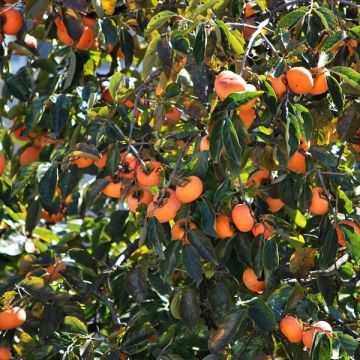
Available in 2 sizes
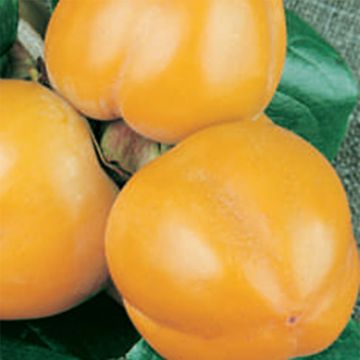
Available in 2 sizes
Available in 1 sizes
Available in 1 sizes
Available in 2 sizes
Available in 1 sizes
Available in 1 sizes
Available in 1 sizes
Available in 1 sizes
Where to dry your persimmons?
In Asia, they are dried outdoors in the sun, or under the eaves of the house, using bamboo supports: either vertically (in Japan), with persimmons tied one above another with strings (a bit like Espelette peppers), or on long sticks that serve as “persimmon skewers”, or horizontally on large bamboo sieves so air can circulate well (in China). It is an absolutely magnificent sight for anyone wandering through these countries in November and December.
At home, try to reproduce the vertical method that ensures good aeration, under a shelter ideally in a sunny position, or like the Asians, under the roof eaves; in any case outdoors if possible when you live in the south. They must dry, so must not be exposed to rainwater. Ambient humidity slows down the drying process, and may even produce mould. They need a dry, sunny atmosphere, so outside the south, dry them indoors, behind a window for example, or near a radiator. If you have bamboo, are just starting out, and do not wish to dry a large quantity, you can make a large sieve that will hold around ten. Drying can also be done in the Chinese way, by skewering the persimmons on a long stick (wooden barbecue skewers will do); in that case, skewer them side by side so they will dehydrate.
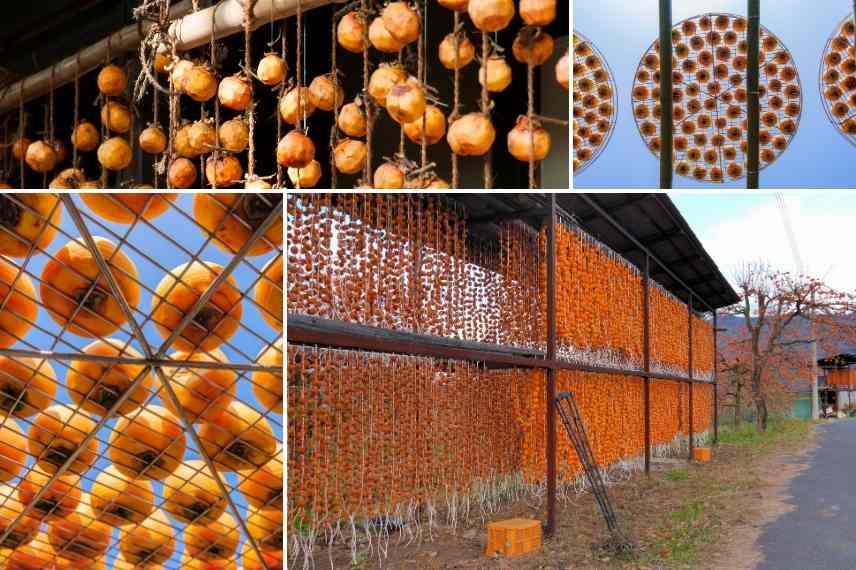
Japanese- and Chinese-style persimmon drying
How should I proceed?
If you don’t have a persimmon tree in your garden, you can obtain persimmons from the exotic section of your supermarket, or from Asian shops from October onwards (in that case, drying on a stick is recommended, as they rarely have an attaching stem).
Preparation of Hoshigaki is meticulous and precise, in keeping with Japanese tradition:
- If drying persimmons outdoors, choose a sunny day with low humidity and no risk of showers: first day of drying is crucial for the fruit to form a crust as quickly as possible
- Select firmly textured fruit (about the firmness of an apple); this makes peeling easier and ensures good shape during drying; cut fruits with a short piece of twig to help hanging
- Peel fruits entirely with a vegetable peeler, neatly, leaving a little skin around the peduncle and the stem you keep. Ideally leave a small piece of skin at the lower end of the fruit.
- You can blanch them for a few seconds in boiling water, though this step is not essential
- Hang them on fairly thick string — linen or cotton, which will bruise the fruit less — by the peduncle or end of the stem: wrap the string several times around the peduncle or tie a loose knot each time. You can hang 5 to 10 fruits per string, depending on fruit size and your enthusiasm for Hoshigaki! Fruits must not touch one another.
On a wooden barbecue skewer, you can place a maximum of 4 side by side. - After one week, give them a gentle massage, repeating about every 5 days or daily if possible: this helps redistribute pulp and keeps the interior soft and juicy. Perform this massage very delicately, with always-clean hands.
- Your persimmons will gradually change colour, become less shiny, and will above all begin to shrivel
- Drying takes about 5 weeks, depending on fruit size and climatic conditions or indoor air
- As sugar gradually crystallises on the surface, they will be covered with a fine white film. You will no longer be able to massage them, the pulp having set, but fruits should remain supple: they are ready!
- Serve whole or cut into thick slices. If ready by 31 December, impress guests by offering these dried fruits like dates or dried figs at the end of a meal — New Year’s Eve will take on a pleasant exotic note!
There are different ripening stages for dried persimmon: they remain more or less soft and juicy with longer drying times; it is really a matter of taste. Bear in mind that the drier your hoshigaki, the better they will keep. They are excellent for 3 months, keep up to one year, and can also be frozen.
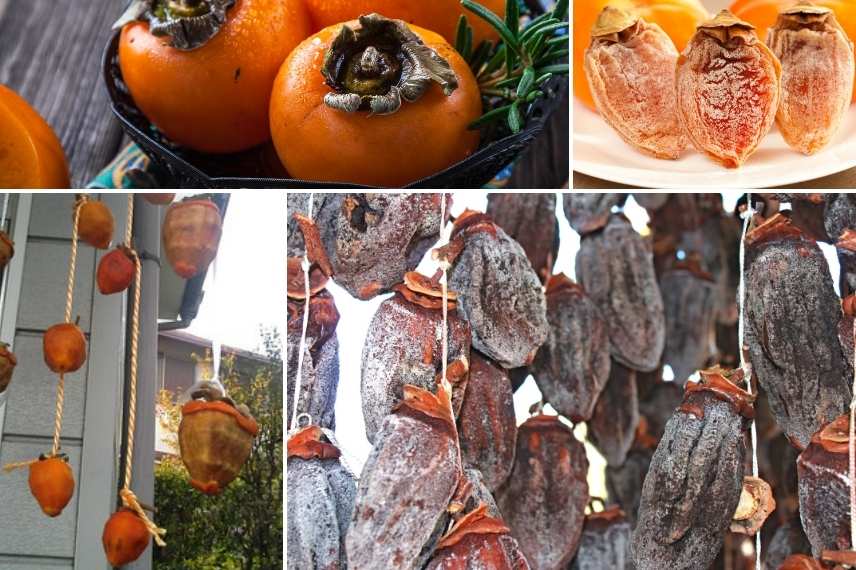
The different stages of your preparation
Which variety of persimmon?
There are many varieties of persimmon, more or less astringent: ‘ama-gaki’ are sweet and ‘shibu-gaki’ are astringent.
Persimmon ‘Sharon’ is often considered favourite persimmon, the one most commonly found on market stalls. It is slightly astringent, best eaten fresh once fully over-ripe.
For making hoshigaki, the Fuyu (most widely eaten in Japan) and Jiro varieties, non-astringent, are very well suited. Astringent persimmons such as ‘Muscat’, Hachiya and Shigugaki require a longer drying time to remove all astringency from the fruit.
Have a persimmon tree at home and unsure which cultivar it is? Unfortunately, external appearance of fruit gives no indication of astringency. With your abundant harvest, try several tests by tasting your persimmons at different stages — you will find ideal drying time for your hoshigaki!

Persimmon ‘Fuyu’ and Persimmon ‘Jiro’
- Subscribe!
- Contents
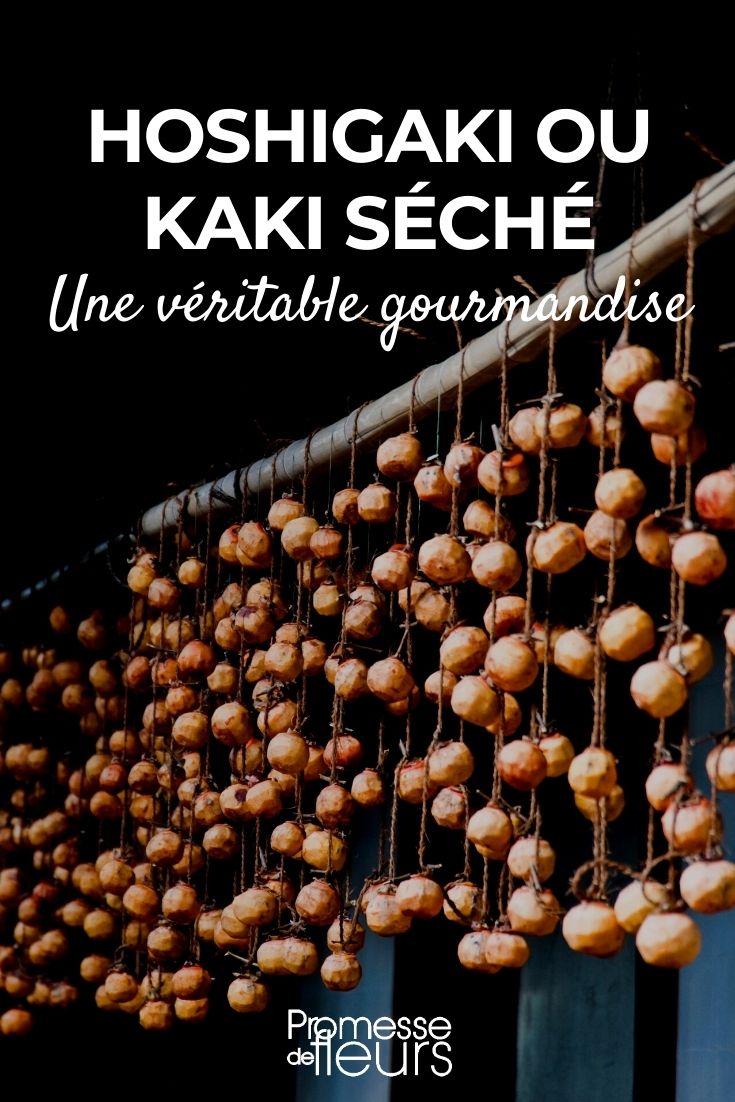































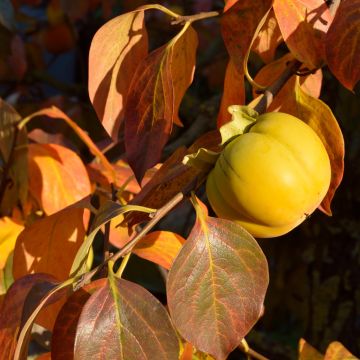
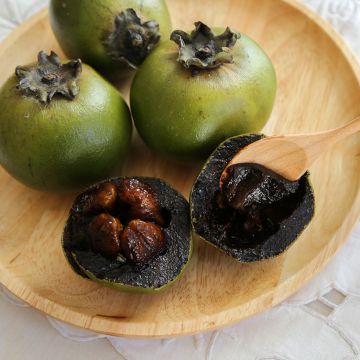
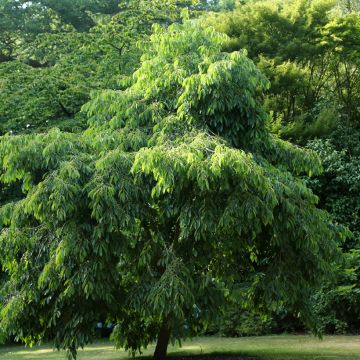
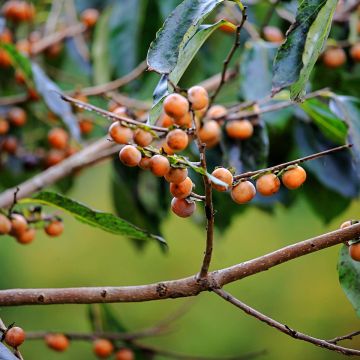
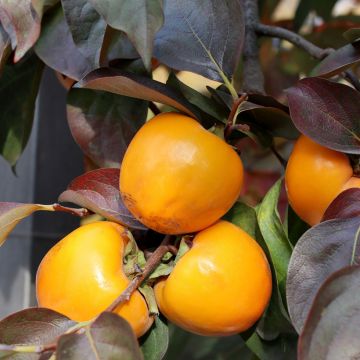
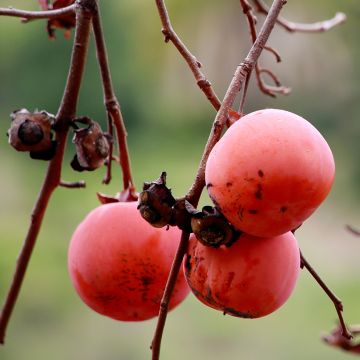
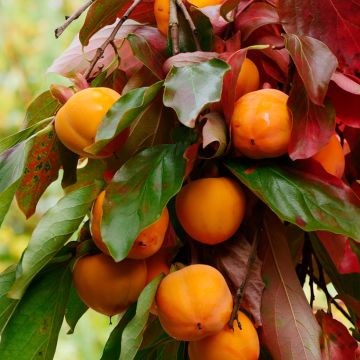
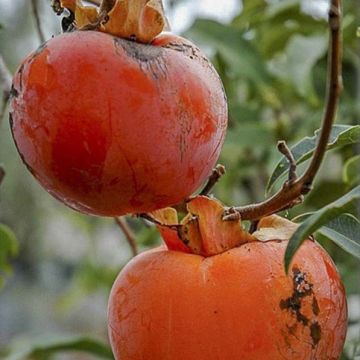
Comments